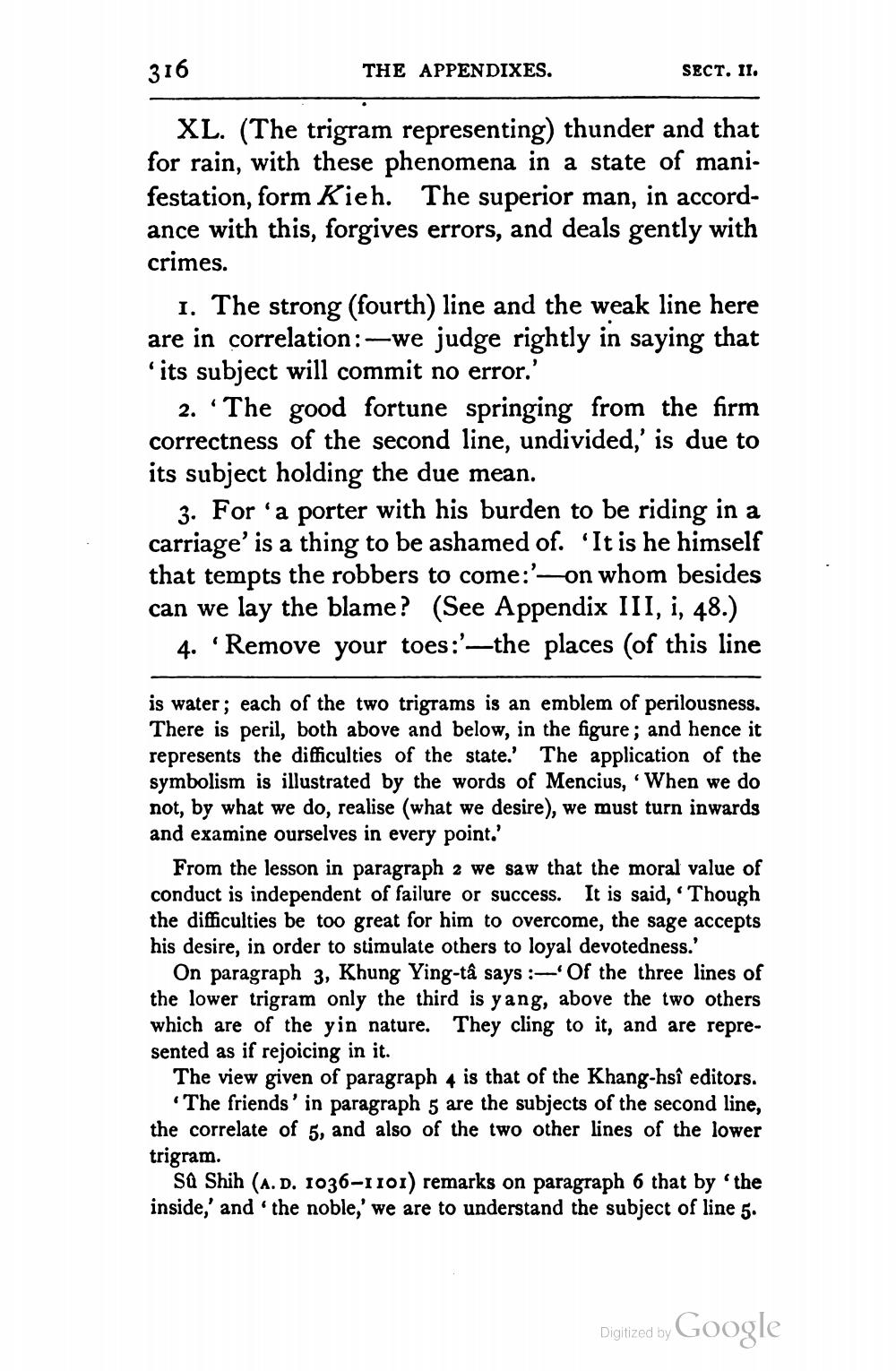________________
316
THE APPENDIXES.
SECT. II.
XL. (The trigram representing) thunder and that for rain, with these phenomena in a state of manifestation, form Kieh. The superior man, in accordance with this, forgives errors, and deals gently with crimes.
1. The strong (fourth) line and the weak line here are in correlation:—we judge rightly in saying that its subject will commit no error.
2. “The good fortune springing from the firm correctness of the second line, undivided,' is due to its subject holding the due mean.
3. For 'a porter with his burden to be riding in a carriage' is a thing to be ashamed of. 'It is he himself that tempts the robbers to come:'-on whom besides can we lay the blame? (See Appendix III, i, 48.)
4. Remove your toes:'—the places (of this line
is water; each of the two trigrams is an emblem of perilousness. There is peril, both above and below, in the figure; and hence it represents the difficulties of the state. The application of the symbolism is illustrated by the words of Mencius, 'When we do not, by what we do, realise (what we desire), we must turn inwards and examine ourselves in every point.'
From the lesson in paragraph 2 we saw that the moral value of conduct is independent of failure or success. It is said, 'Though the difficulties be too great for him to overcome, the sage accepts his desire, in order to stimulate others to loyal devotedness.'
On paragraph 3, Khung Ying-tâ says :-Of the three lines of the lower trigram only the third is yang, above the two others which are of the yin nature. They cling to it, and are represented as if rejoicing in it.
The view given of paragraph 4 is that of the Khang-hsî editors.
• The friends' in paragraph 5 are the subjects of the second line, the correlate of 5, and also of the two other lines of the lower trigram.
Sa Shih (A.D. 1036-1101) remarks on paragraph 6 that by the inside,' and 'the noble,' we are to understand the subject of line 5.
Diglized by Google




